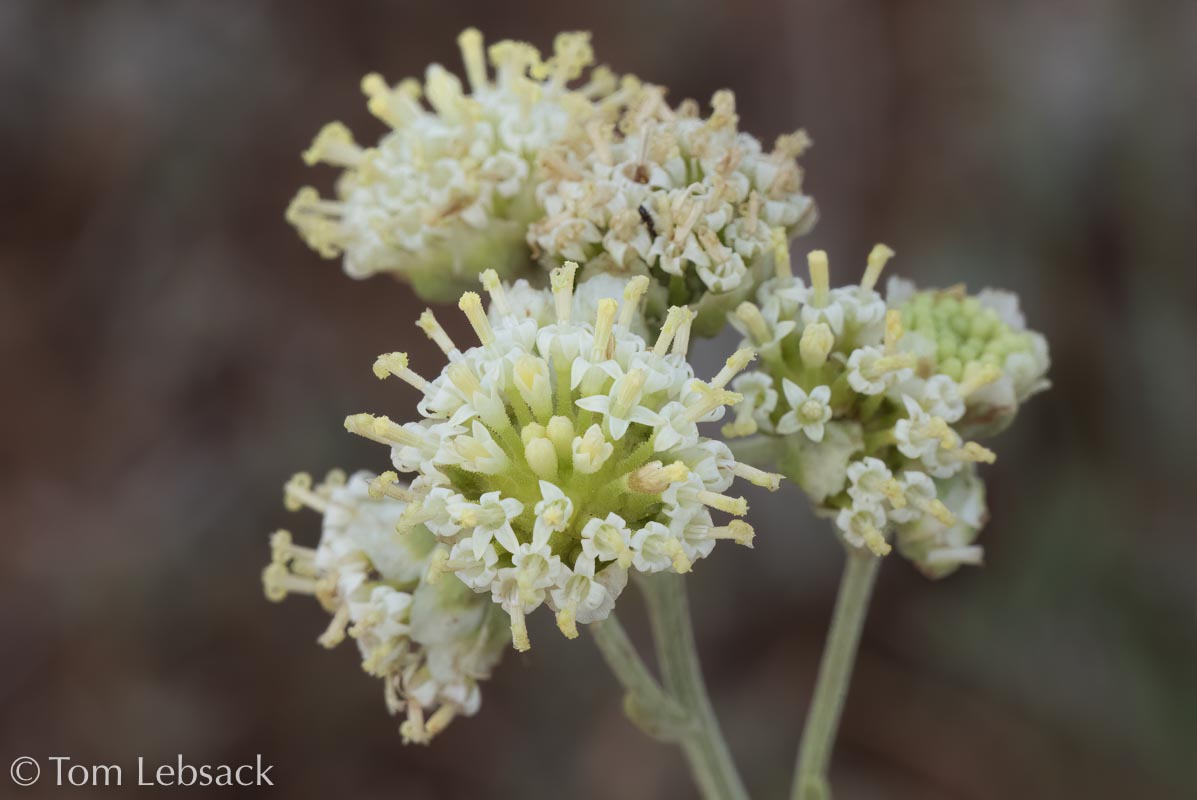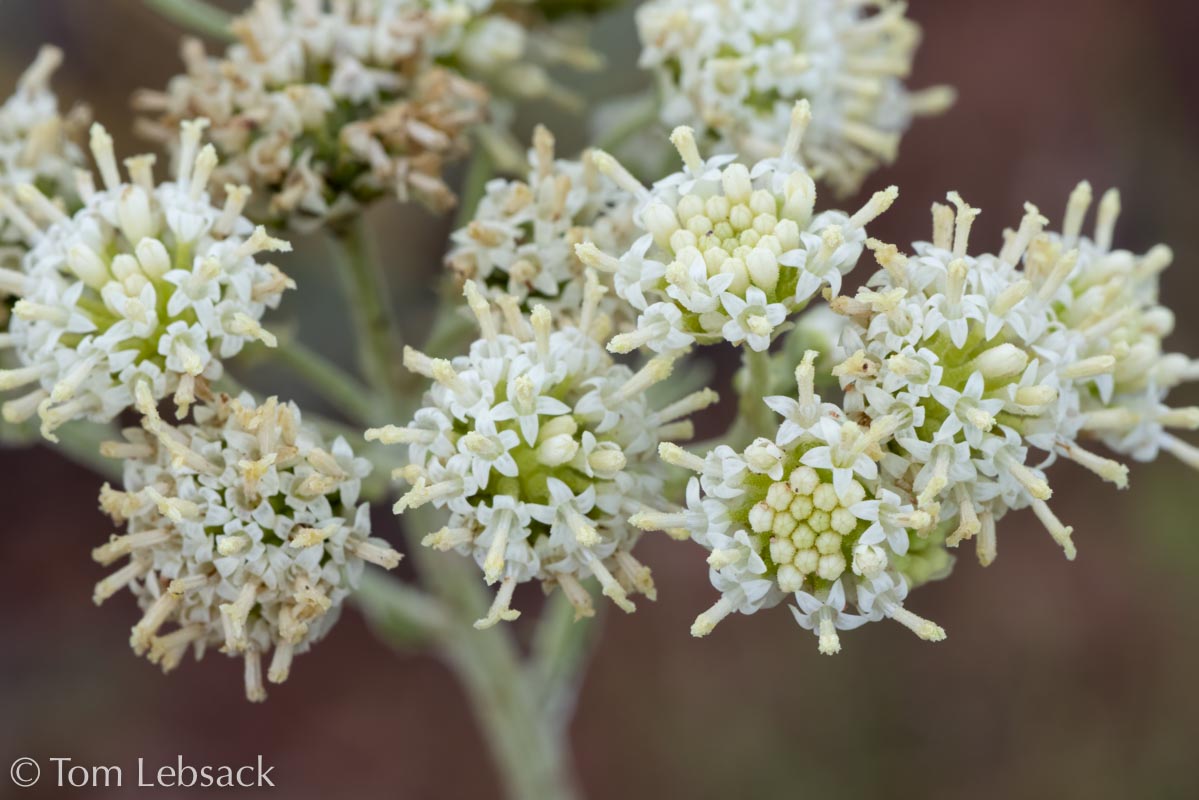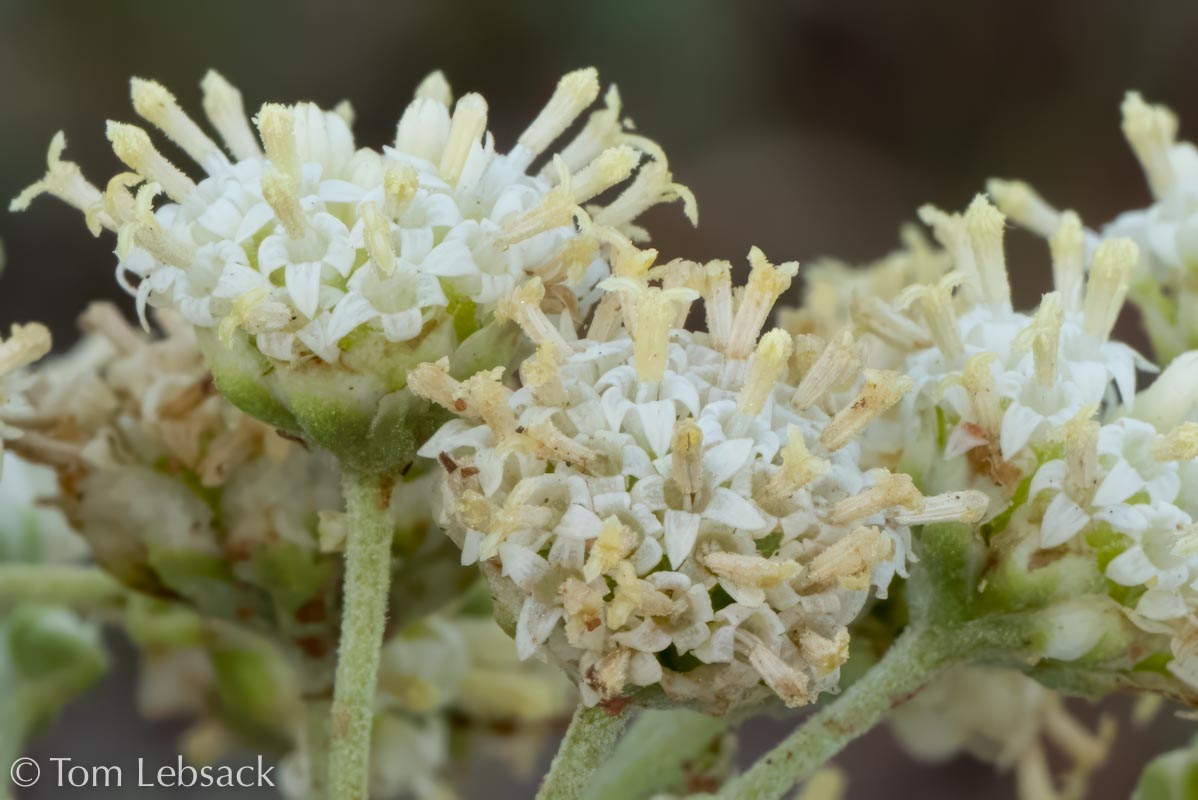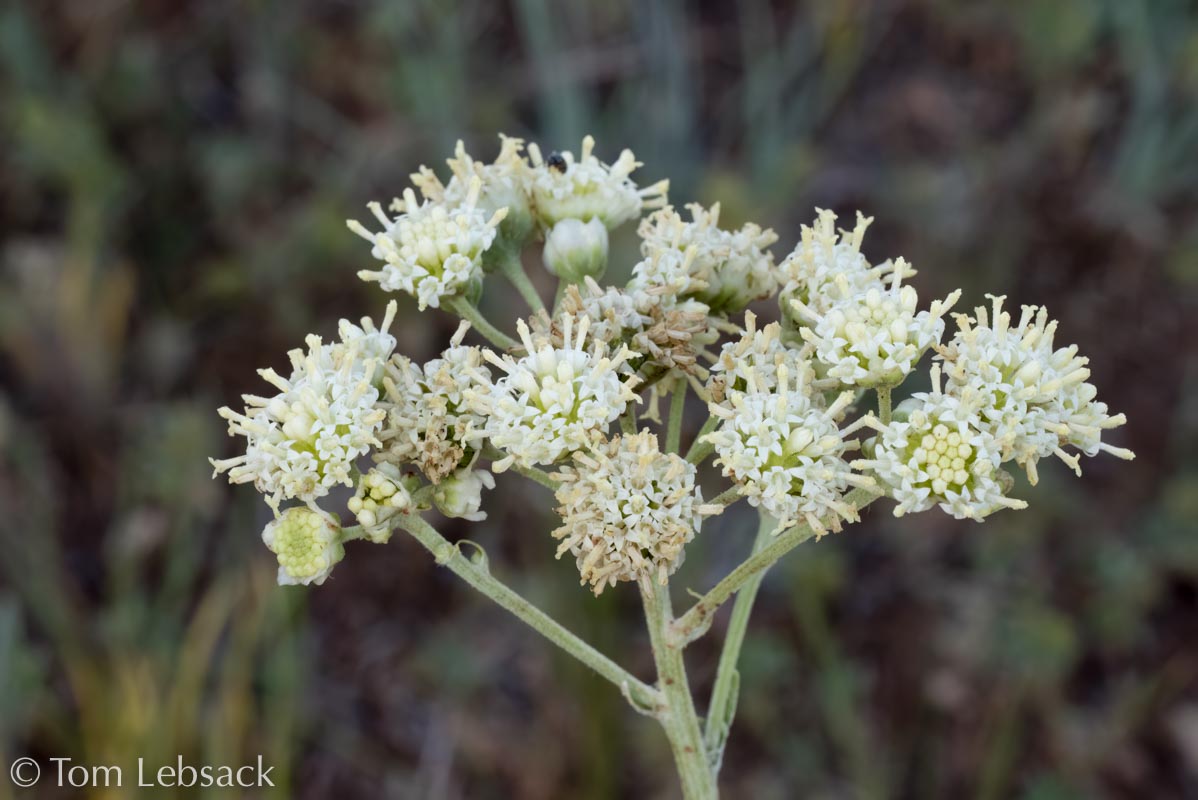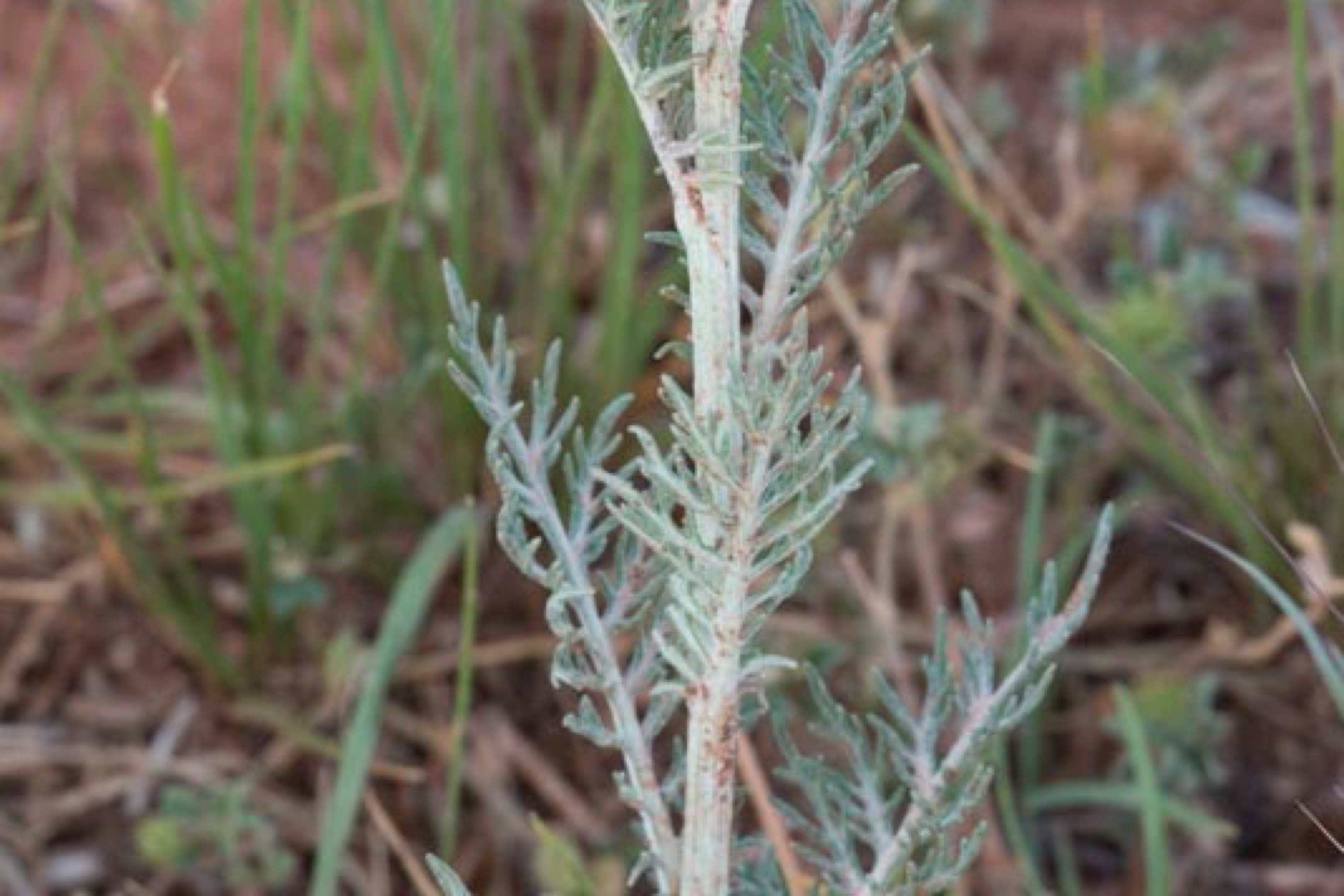Texas Wildbuds
Hymenopappus tenuifolius
(Chalk Hill Woollywhite)
| Scientific Name | Hymenopappus tenuifolius | USDA PLANTS Symbol | HYTE2 |
| Common Name | Chalk Hill Woollywhite | ITIS Taxonomic Serial No. | 37773 |
| Family | Asteraceae (Sunflower) | SEINet Reference |
Click Here |
| Description | Habitat: Dry sandy, rocky, calcareous or clay soils in open areas; prairies, pastures, right-of-ways. Plant: Erect, single-stemmed, biennial 1 to usually 3 (up to 6) feet tall; stem is somewhat woolly to nearly smooth and branched in upper portions when flowering. Leaves: First-year basal leaves in a rosette, 3 to 6 inches long and 1-5/8 to 2 inches wide; ovate to triangular in outline, bipinnately-divided with narrow linear or filiform segments; stem leaves similar in shape but smaller; gray-green from many short white hairs, especially on undersides. Inflorescense: Many flower heads in flat-topped clusters, each on pubescent to smooth peduncles 3/8 to 2 inches long, with 25 to 50 small white to creamy-white flowers; no ray flowers; disk florets have protruding tubes with reflexed style lobes at the ends; bell-shaped involucre with hair-covered or smooth phyllaries that are greenish-white to pale yellow-green, ovate with round-pointed tips. Bloom Period: May to August. References: "Manual of the Vascular Plants of Texas" by Correll and Johnston, Missouri State University and Flora of North America. |
BONAP Distribution Map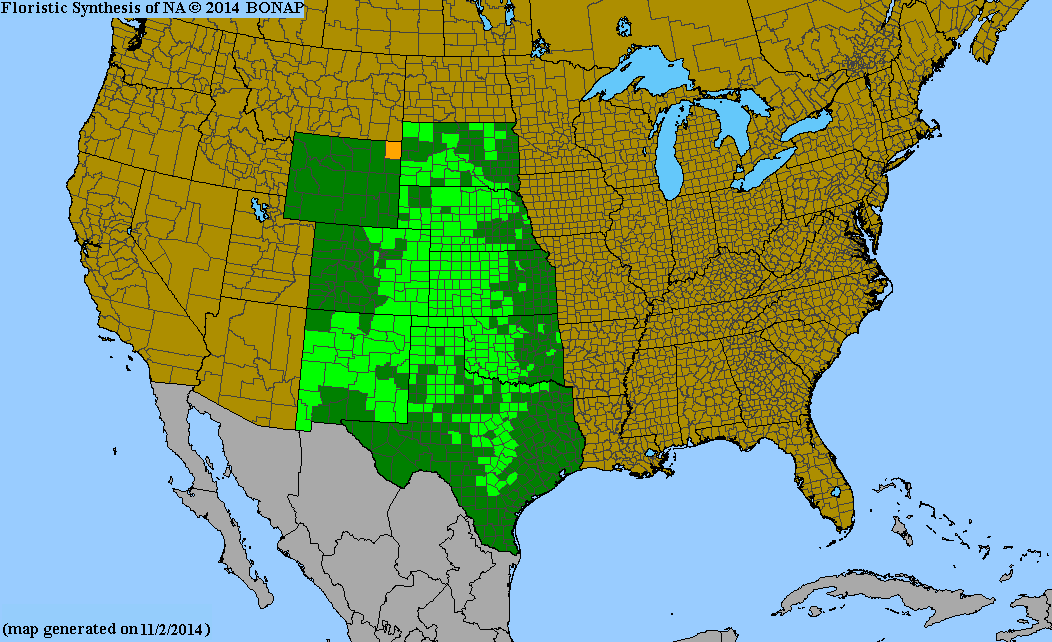 Map Color Key |
Texas Status: Native |
Banner photo of Castilleja indivisa and Lupinus ssp. taken along FM 1323 north of Johnson City, Blanco County
© Tom Lebsack 2025
Every attempt is made to provide accurate, up-to-date, and relevant information, but the completeness or accuracy of any information presented on this website cannot be guaranteed. I use authoritative references to insure high standards of accuracy and review and update the information frequently.
